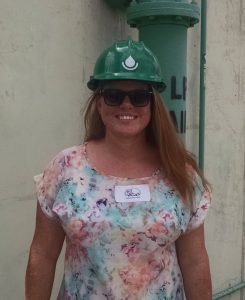Hong Kong to Honolulu: Water Quality from Two Different Worlds
“It clouds up in the city, the weather man complains
But where I come from, rain is a good thing”
-Rain Is a Good Thing by Luke Bryan
Somehow, our class dodged most rain during our afternoon field trips in Hong Kong. But the day after class ended and it was sight-seeing time, boy did it pour. We ran from one building to another during the intense monsoon events when it felt like buckets of rain were falling on us. Hong Kong has intensely developed streets which begs the questions of where does all this rainfall go?
Since the trip to Hong Kong, I have been interning at the storm water quality division of the City and County of Honolulu. I was tasked to research Low Impact Development (LID) initiatives in Honolulu to support the city’s EPA permit. Generally speaking, LID practices treat storm water as a resource by either encouraging infiltration through pervious surfaces or using rainwater catchment and retention. Here in Honolulu, there are plenty of places to make small rain gardens, catchment basins or other LID techniques, but thinking back to Hong Kong, I can’t possibly imagine where the water could go other than underground and out to the ocean.
I constantly compare Honolulu to Hong Kong due to their similarities in climate, culture, and land area. But the biggest thought I brought back was that Honolulu might become a Hong Kong-type city in the next 50 years. Hong Kong was just a fishing village 50 years ago and Honolulu is rapidly expanding as Hong Kong did and continues to do. It makes me think again about what would be best for the storm water entering both cities.
Big storm drains underneath the city move storm water away from development as quickly as possible but does not treat the water for pollutants. However, LID does not treat the water either, it stores the pollutants in the soil, sometime causing the need for expensive soil excavation. From my time in Hong Kong, I learned that large scale cities, need large scale solutions. I learned that you need to think of the future when sustainable development is the goal and it may not be the most obviously ‘sustainable’ solution. Although I do not have the answers to Honolulu’s storm water quality issues, it is helpful to look at cities like Hong Kong that are farther ahead in development to understand the outcomes of large systems like storm water management.


